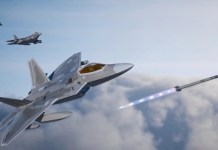After more than twenty-five years in limbo, the nuclear-powered battle cruiser Admiral Nakhimov is back in service.
The 28,000-ton ship has started sea trials in the White Sea, a moment many in Russia have been waiting for since the late 1990s. It is the latest chapter in a story that began in the Soviet era, paused for decades, and has now edged into a new phase.
Admiral Nakhimov Returns To The Sea
The milestone follows years of speculation and repeated postponements. The cruiser’s story stretches back to the Soviet era. Laid down in Leningrad in 1983 and launched three years later as ‘Kalinin’, the ship belonged to the Project 1144.2 Orlan class, known to NATO as the Kirov class.
She joined the Northern Fleet in 1988 and was renamed Admiral Nakhimov in 1992, in honor of a celebrated 19th-century Russian admiral.
But its active service was brief. The cruiser last sailed in 1997 before being laid up at the Sevmash shipyard in Severodvinsk, where it spent years idle in dry dock.
Serious modernization work only gathered pace in 2013. Initial estimates optimistically suggested the overhaul would be completed by 2018. That deadline slipped again and again, first to 2019, then to 2020, and later to 2021. By 2022, even shipyard officials conceded the vessel would not be ready before 2024.
Despite the delays, progress in recent months has been tangible. Both of the cruiser’s nuclear reactors were restarted earlier this year, paving the way for sea trials.
Video circulating online now shows the 28,000-ton ship cutting through northern waters, a sight not witnessed in more than two decades.
The upgrade has turned the Admiral Nakhimov into a formidable strike platform. Open sources suggest the cruiser will carry up to 80 Kalibr-NK or Oniks cruise missiles, launched from ten universal vertical launchers. This would make her one of the most heavily armed surface warships in service today.
Moscow views Admiral Nakhimov not just as an operational asset but as a symbol of Russia’s naval ambitions. Officials have indicated the ship could take over as flagship of the Northern Fleet, eventually replacing her sister vessel, Pyotr Velikiy.
🇷🇺🫡⚓️ At last..heavy nuclear cruiser «Admiral Nakhimov» left SevMash shipyard for sea-trials after refurbishing. The ship spent more than 25 yrs at the shipyard.
📸 Courtesy: L.Alekseeva pic.twitter.com/WWPUoRds9U— KURYER🤔 (@RSS_40) August 18, 2025
According to Russian media, United Shipbuilding Corporation head Andrei Kostin personally briefed President Vladimir Putin on the cruiser’s return to sea.
How Modern Is the “Modernized” Admiral Nakhimov?
Admiral Nakhimov may finally be back at sea, but a big question remains: how deep does its modernization really go? Of all the new weapons and sensors that were promised, how many have actually been installed, and how capable are they in practice?
At the heart of the upgrade plan was an ambitious goal. The cruiser was supposed to carry 174 vertical launch tubes, more than any other surface warship or submarine in the world.
To put that in perspective, China’s Type 55 “super destroyer” has 112, a U.S. Navy Ticonderoga cruiser has 122, and a modern Arleigh Burke destroyer has 96. Even the futuristic Zumwalt class destroyer carries just 80.
The original vision was for 78 of the Admiral Nakhimov’s cells to hold long-range strike weapons, including the subsonic Kalibr, the supersonic Oniks, and the hypersonic Zircon.
The Kalibr has been combat tested extensively in Ukraine, while the Zircon has so far been officially deployed only on Admiral Gorshkov-class frigates. Still, evidence suggests Russia has at least tested Zircon in combat conditions, possibly from land-based launchers.
At one stage, the Kirov class battlecruisers were supposed to be the first ships to operationally field the hypersonic weapon, but repeated delays to the Nakhimov pushed that ambition aside.
The other 96 launch tubes were planned for surface-to-air missiles tied to the S-300FM Fort system, itself derived from the land-based S-300.
There has also been speculation that newer S-400 missiles might be included, which would enhance the ship’s air defense and anti-ballistic missile role. Complementing these were supposed to be eight Pantsir-M close-in defense systems, although reports now suggest only six have been fitted, three per side.
All of this was meant to be tied together by new radar and command systems. What is known for certain is that the cruiser has received at least some new radars and a replacement for its main gun, swapping the old Soviet-era AK-130 for the more modern AK-192M of the same caliber. Beyond that, the picture is less clear.
It is possible that many of the other planned systems will still be installed, but for now, it is hard to say if the Admiral Nakhimov has emerged from its overhaul truly “as new.”
Long refits often leave ships only partially upgraded. The Royal Navy’s Type 45 destroyer HMS Daring, for example, has spent more than 3,000 days (approx. 8 years) out of service during its current refit, a period longer than the time it took to build it in the first place.
Modernizing a nuclear-powered surface ship is even more complicated. The Kirov class is the only nuclear-powered surface combatant left in the world, after the US Navy retired its cruisers of the same type in the 1990s due to cost. That uniqueness makes every upgrade slow, difficult, and expensive.
The Admiral Nakhimov’s return also raises another question: what happens to its sister ship, Pyotr Velikiy? That vessel only received a minor upgrade and still relies largely on Soviet-era systems.
At one time, both ships were supposed to get the same deep modernization, but reports now suggest Pyotr Velikiy may instead be retired once the Nakhimov re-enters service. Two earlier hulls in the class, Admiral Ushakov and Admiral Lazarev, have already been scrapped.
This makes Nakhimov’s role even more significant. Russia’s only aircraft carrier, the Admiral Kuznetsov, may never return to service, and plans for a new generation of “super-destroyers” have been shelved. That leaves the refurbished battlecruiser to act as the centerpiece of future Russian naval groups.
After more than a decade of work, endless delays, and mounting uncertainty, the ship’s return to sea is undoubtedly an achievement. But whether Admiral Nakhimov has truly been transformed into the cutting-edge powerhouse once promised remains an open question.
Naval modernization on this scale is rarely neat. It is usually a long slog through budgets, supply chains, and shipyard realities.
Vice Admiral Kulakov: Another Story
The return of Admiral Nakhimov mirrors another long-delayed comeback in the Russian Navy, that of the destroyer Vice Admiral Kulakov.
The Russian anti-submarine destroyer Vice Admiral Kulakov has had a long and unusual journey back to the fleet. First commissioned in 1981, the ship served for just a decade before being pulled out of service in 1991 for extensive repairs.
What was meant to be a refit stretched on for nearly twenty years. Only in December 2010 was the vessel finally recommissioned and brought back to its home port at Severomorsk, ready once again for active duty.
Since then, the Kulakov has slowly rebuilt its presence at sea. In 2021, it was sent on deployment to the Mediterranean and the Gulf of Guinea, a sign that the ship was once again being trusted with long and demanding missions.
A year later, it took part in naval exercises in the Mediterranean, showing that the Russian Navy intended to keep it active after such a long absence.
Today, the destroyer is firmly back in service, regularly joining drills and deployments. Its return is a reminder of how Russia often holds on to older warships, sometimes keeping them in limbo for decades before giving them a second life at sea.
A Fleet That Refuses To Let Go
The parallel stories of Admiral Nakhimov and Vice Admiral Kulakov show a pattern. Russia clings to its aging warships, keeping them tied up for years or even decades before investing heavily to bring them back. The result is a fleet that looks both outdated and formidable at the same time, mixing Soviet hulls with modern weapons.
After years of uncertainty, Admiral Nakhimov’s sea trials are a milestone. But whether the cruiser has truly been reborn as the cutting-edge warship once promised remains an open question.
- Shubhangi Palve is a defense and aerospace journalist. Before joining the EurAsian Times, she worked for ET Prime. She has over 15 years of extensive experience in the media industry, spanning print, electronic, and online domains.
- Contact the author at shubhapalve (at) gmail.com




